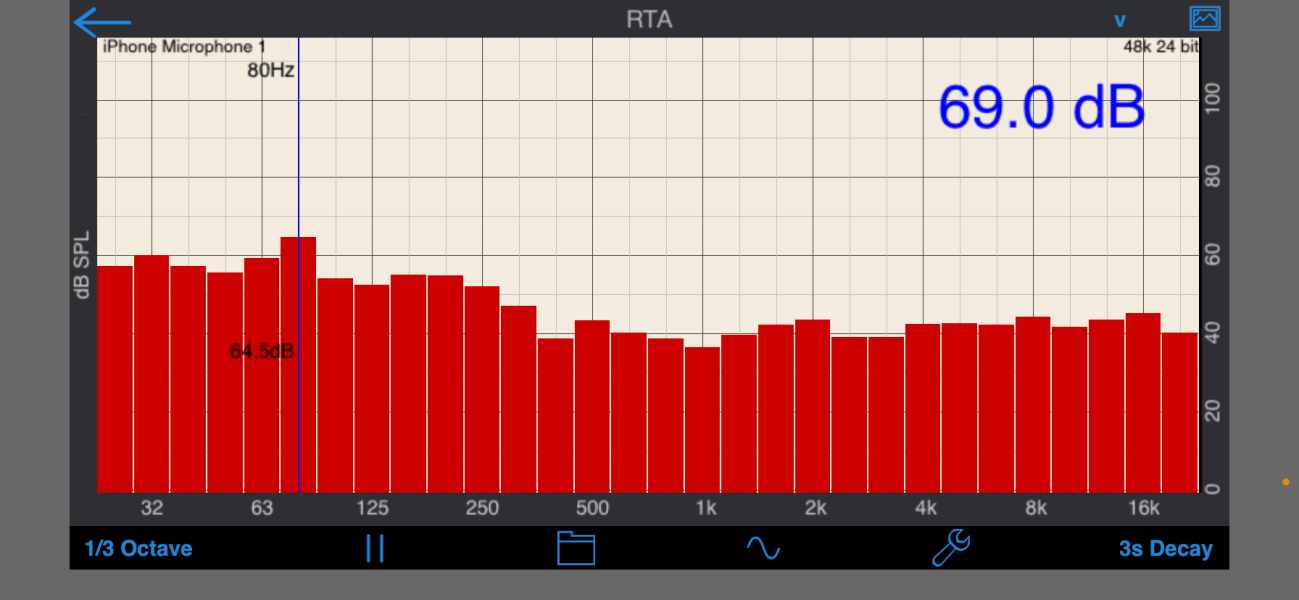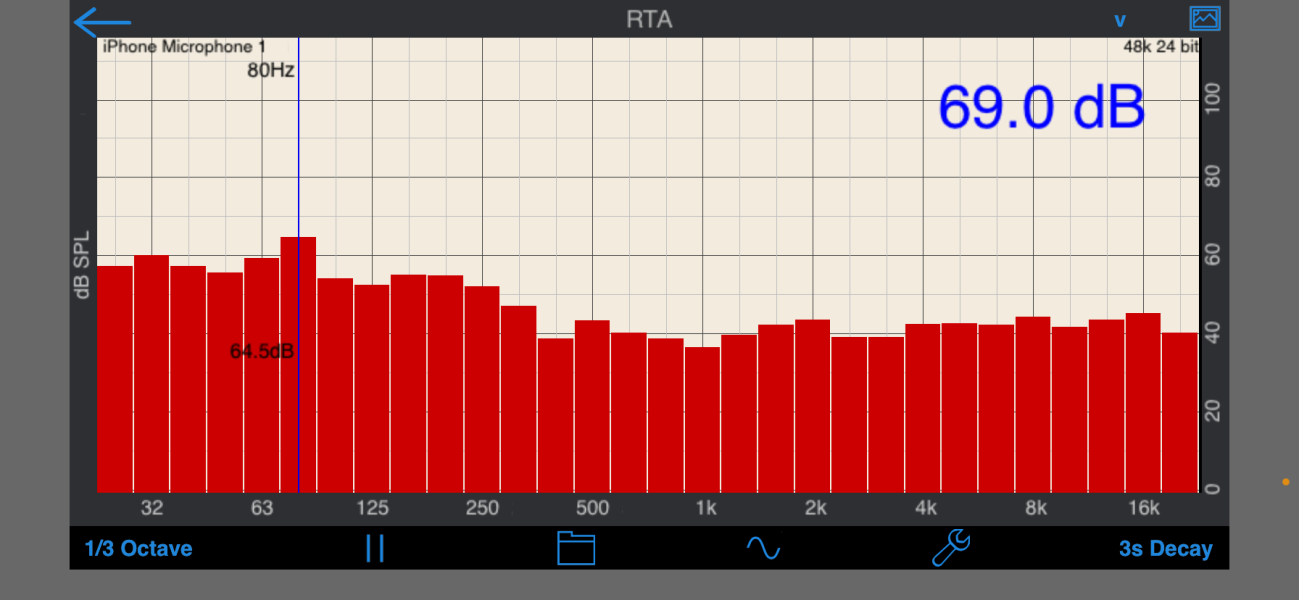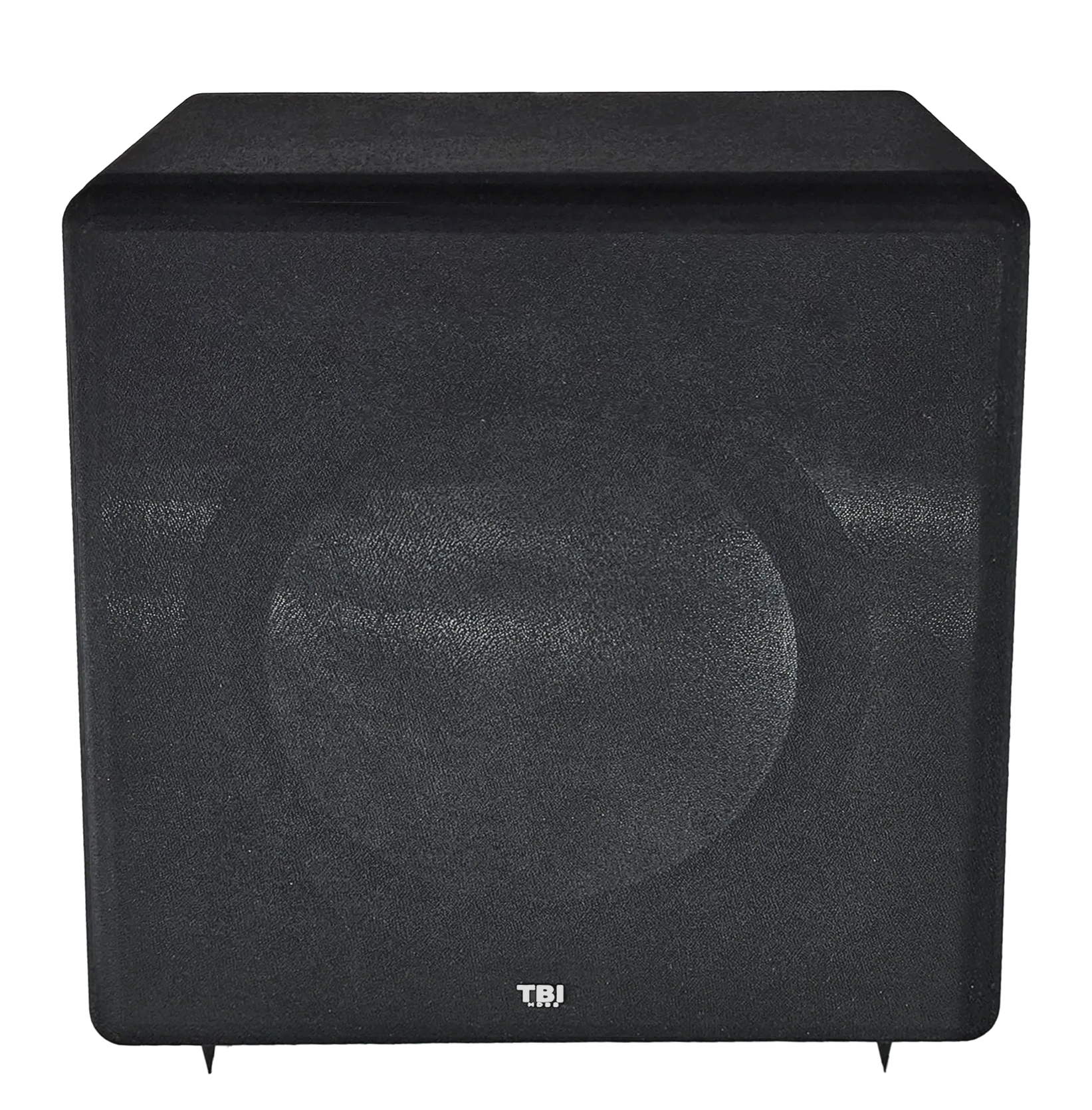The link shows the same 1/6-octave smoothed graph as before, and the range (+120 dB to -190 dB) and step size (10 dB/division) are too large to do meaningful assessment and comparisons.
The sine wave is pretty meaningless; it is at low power (2 W), does not show the start to demonstrate the claimed "speed", and ~1% distortion is virtually impossible to see looking at a sine wave in isolation (without a reference superimposed).
This is the plot of one of my subwoofers, at 5 dB/division, though only goes to 300 Hz (high enough to be beyond the sub's roll-off). The TBI sub goes higher, though that is not necessarily an advantage for a sub since you would have problems integrating with high crossover and the wider bandwidth means more noise and needs more attention to stability.
View attachment 134995




















